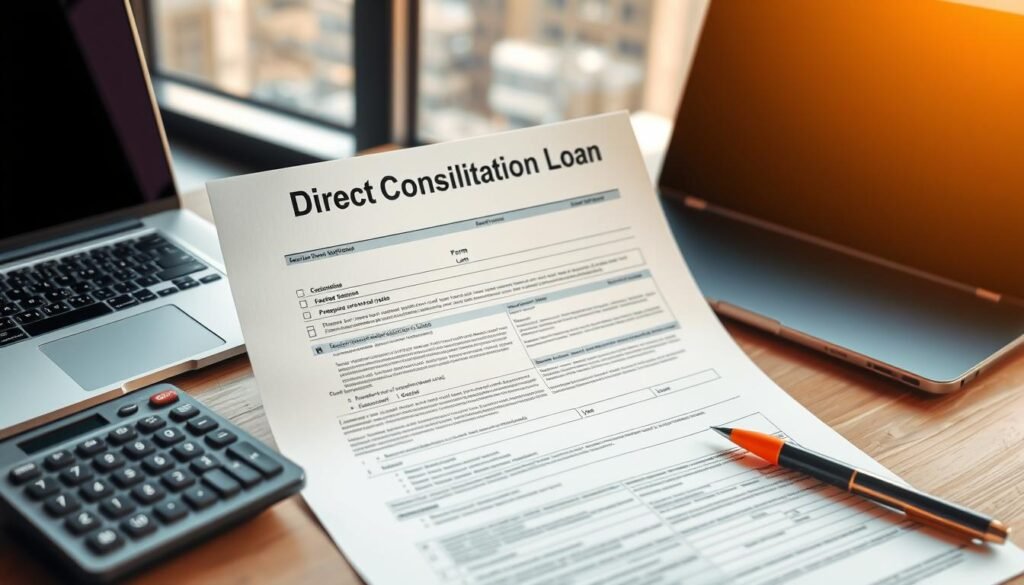
USA Student Loan Consolidation or Refinance: Which is Better?

Which path saves you more money without costing key protections? That question frames a choice millions face today.
You will compare two clear options: one that keeps federal protections and simplifies bills, and one that may cut your interest rate if you qualify.
About 45 million Americans carry balances, so picking the right path affects real budgets. Consolidation combines federal balances into a single Direct Consolidation loan with a weighted average interest rate, rounded up to the nearest 1/8%. It does not lower rates but preserves federal benefits like IDR and PSLF.
Refinancing replaces federal or private balances with a private lender. If your credit and income are strong, you might get a lower rate and shorter term. But refinancing federal amounts gives up federal protections permanently.
This guide helps you weigh simplicity against savings, eligibility, qualifying factors, and the top differences that matter to your wallet right now.
- What consolidation and refinancing mean for your student loans right now
- student loan consolidation vs refinance USA: key differences that affect your wallet
- When consolidation fits best for federal student loans
- When refinancing can save you money
- Choose your path with confidence: simple steps to move forward
What consolidation and refinancing mean for your student loans right now
Deciding between a government merger and a private rewrite affects both your near-term budget and long-term interest. A Direct Consolidation Loan from the U.S. Department of Education merges multiple federal loans into one account with a single servicer and one monthly payment.
Key features: the federal program sets an interest rate equal to the weighted average of your existing federal rates, rounded up to the nearest 1/8%. That does not lower your rate, but it can simplify bills and extend terms to reduce monthly payment amounts.
A private lender can pay off your federal and private balances and issue a new private note. Your new rate and terms depend on credit, income, and underwriting. With stronger underwriting you might secure a lower rate and save interest over time.
Trade-offs: consolidation preserves access to IDR, PSLF, deferment, and forbearance. Refinancing federal amounts converts them to private debt and ends those federal protections.
Want a quick primer on federal options and servicing changes? See the federal repayment system.

student loan consolidation vs refinance USA: key differences that affect your wallet
Small differences in rules and rates can lead to big savings or costly trade-offs down the road.
Which loans are eligible:
Eligibility and scope
A Direct Consolidation Loan applies only to federal student loans. It cannot fold private balances into the government program.
Private refinancing can include federal and private accounts, depending on the lender's policy. That means you may combine everything but you may also give up certain protections.
Interest and pricing:
How rates are set
Consolidation uses a weighted average of your federal interest rates, rounded up to the nearest 1/8%. That preserves the original cost structure and does not lower your rate.
Refinancing sets a new interest rate based on credit, income, and term. If you qualify, you can often secure a lower interest rate and reduce total interest paid.
Protections and repayment:
Benefits and servicers
Consolidation keeps federal benefits such as income-driven repayment (IDR), PSLF, deferment, and forbearance. Your repayment plans stay flexible under the federal program.
Private refinancing removes eligibility for those federal programs. You move to a private servicer and accept private terms for payment and term length.
Approval process:
Underwriting and access
Applying for a Direct Consolidation Loan is a government process if you meet eligibility. Refinancing requires lender underwriting and usually a credit check, income verification, and possibly a cosigner.

| Feature | Direct Consolidation Loan | Private Refinancing | Impact on You |
|---|---|---|---|
| Eligible Balances | Federal loans only | Federal and private (lender-dependent) | Choose based on which balances you want combined |
| Interest | Weighted average (rounded to 1/8%) | New rate based on underwriting | Refinance can lower interest if you qualify |
| Federal Benefits | IDR, PSLF, deferment, forbearance retained | Federal benefits lost if federal is refinanced | Consolidation preserves program options |
| Approval | Government process (eligibility-based) | Private lender underwriting and credit checks | Refinance may require stronger credit or cosigner |
Decide whether your priority is keeping federal protections and flexible repayment or chasing a lower interest rate. If you want a clear next step, see resources at Study Finance to compare options and find lenders that fit your situation.
When consolidation fits best for federal student loans
When your goal is program access and simplicity, merging federal balances into a single account often makes sense.
Streamlining multiple federal loans into one.
A Direct Consolidation Loan pulls several federal accounts into one federal loan with a single servicer and one monthly bill. This reduces administrative hassle and makes payments easier to track.
Opening access to IDR and PSLF for legacy debts.
If you hold FFEL or Perkins balances, consolidation can move them into the Direct Loan program so you qualify for income-driven repayment and Public Service Loan Forgiveness. That change can be decisive for career and payment planning.

Consolidation does not lower your interest; the rate equals the weighted average of your existing federal rates, rounded up to the nearest 1/8%. You may extend terms to reduce your monthly payment, but that can raise total interest paid over time.
Use consolidation when your priority is eligibility, simplicity, or preserving federal benefits rather than chasing a lower rate.
When refinancing can save you money
If you have steady income and strong credit, swapping higher-rate balances for a private note can cut what you pay over time. Lenders set a new rate after checking credit, income, and debt-to-income, so qualifying matters.
Lower interest rate potential
Lower interest rate potential with solid credit, income, or a strong cosigner
If you qualify, a lower rate can reduce total interest and help you save money. Many lenders offer soft prequalification so you can compare offers without a hard credit hit.
Refinancing federal vs. private loans
Refinancing federal vs. private loans: what you give up and what you might gain
Refinancing private balances usually has few program trade-offs. But if you refinance federal loans, you lose IDR, PSLF, and federal deferment or forbearance. Some private lenders offer hardship options, but they are not the same.
Ownership and cosigner changes
Ownership changes and cosigner release: shifting who’s responsible
Refinancing can move a parent-held PLUS to the student or free a cosigner if the new lender allows release after on-time payments. Shop multiple offers to find the best rate and terms that match your cash-flow goals.
Choose your path with confidence: simple steps to move forward
Start by defining whether simplicity or lower rates matters most for your budget and future plans. Clarify your goal: protect federal benefits or pursue a new loan that might help you save money.
Map your accounts: list each federal and private balance, servicer, rate, term, and any program benefits you use. This makes comparisons clear.
To pursue a Direct Consolidation path, sign in at studentaid.gov, pick loans to include, choose repayment plans, submit, and keep paying current servicers until the consolidation loan funds.
To pursue private refinancing, research lenders, prequalify, apply with documentation, and confirm payoff steps. Whatever you choose, keep payments current and review annually to track rates, terms, and benefits.
If you want to know other articles similar to USA Student Loan Consolidation or Refinance: Which is Better? you can visit the category Consolidation.




Leave a Reply